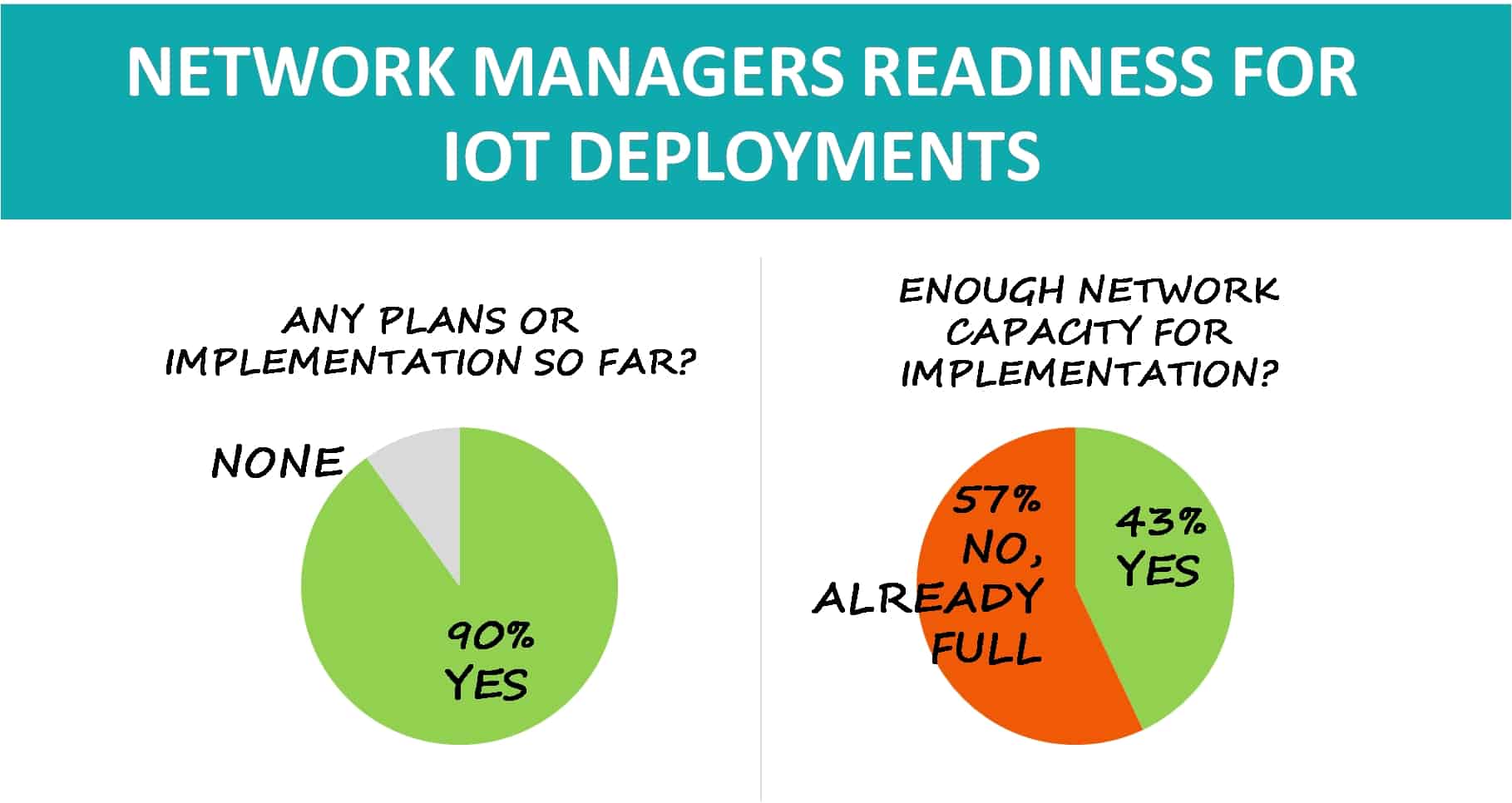Infoblox, a provider of network control solutions that connects end users, devices and networks, published the results of a recent survey that assessed the readiness of enterprises to meet the demand and complexities of the Internet of Things (IoT), including the capabilities of their networks and the ability of their IT departments to handle the surge in connections, data usage, maintenance and security.
As more and more devices become internet-connected, the IoT is becoming an increasingly common topic across enterprises, especially in companies with a mobile workforce and that which implement Bring Your Own Device (BOYD) policies as well as companies running operations involving a large number of machine-to-machine connections. In a statement, Infoblox cited the research firm Gartner, saying that “The installed base of ‘things', excluding PCs, tablets and smartphones, will grow to 26 billion units in 2020, which is almost a 30-fold increase from 0.9 billion units in 2009.” To manage the explosion in the number of connections, enterprises need to put in place the right technologies and solutions as well as internal policies and procedures to manage the proliferation in applications, work processes, data and the load placed on the enterprise networks and IT systems.
The survey, which was conducted last May by research firm Coleman Parkes Research Ltd, involved 400 online interviews with network managers and executives in charge of enterprise networks in companies with more than 1000 employees, across the US and UK. Overall, the survey found that enterprises are aware of the impending deployments in IoT that will be necessary to keep up with the technology advancements across many fields, and are making inroads into building the necessary capacity, infrastructure as well as human capability. However, concerns on the adequacy of their network and IT capabilities, as well as security and overall management of the IoT deployments still abound in many enterprises.
To illustrates the survey findings, key highlights are presented in the infographics below.

Infoblox also added that the network managers can ensure the readiness of their organizations to cater for the demand that IoT is expected to bring by having the following in place:
-
Work to get IT a seat at the table early in IoT deployment planning, before buying decisions are made.
-
Set network access policies for “things” that prevent inefficient use of network resources and preserve network security.
-
Assess control and automation systems, to make sure the network team isn’t overwhelmed by manual tasks as IoT devices come on line.
-
Consider deployment of IPv6, or expansion of existing IPv6 deployments, to prevent the current global shortage of IPv4 addresses from delaying the introduction of IoT.
"It’s encouraging that the majority of IT professionals recognize the demands the Internet of Things will make on their networks. Network administrators have struggled in recent years to stay on top of the ‘bring your own device’ (BYOD) trend, and the IoT will create an increase in end points that is an order of magnitude greater. At the same time, many networks teams will have to respond to the IoT without significant increases in budgets or head count. Network automation will become crucial as IT departments confront this massive growth in network complexity.”
“With so many objects and IP addresses being added, it’s important for network teams to keep track of what’s on their network at any given point, and also to bear in mind all these objects and IP addresses are potential weak links in an organization’s IT infrastructure.”
“These results, while seemingly in conflict, align with what Infoblox customers are telling us anecdotally. IT departments have a seat at the table when business units—such as operations, manufacturing, marketing, sales and customer service—want to move forward with IoT deployments. But these business units often get deep into the buying process before calling IT, sometimes forcing IT to scramble to provide support for devices that lack the full set of connectivity and security protocols found in established categories such as PCs, tablets and smart phones.”
- Cricket Liu, Chief Infrastructure Officer, Infoblox




















